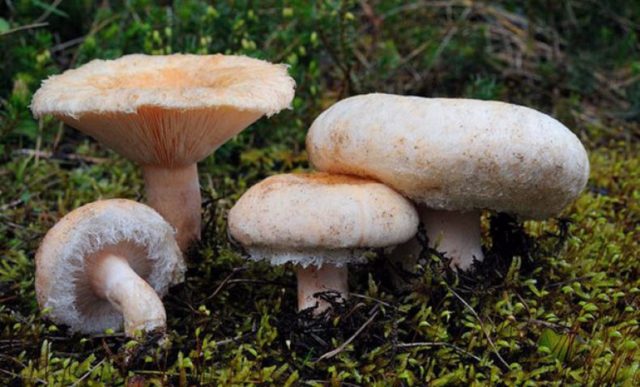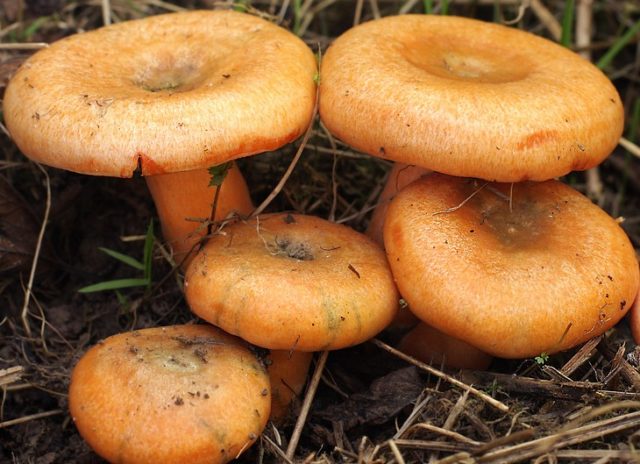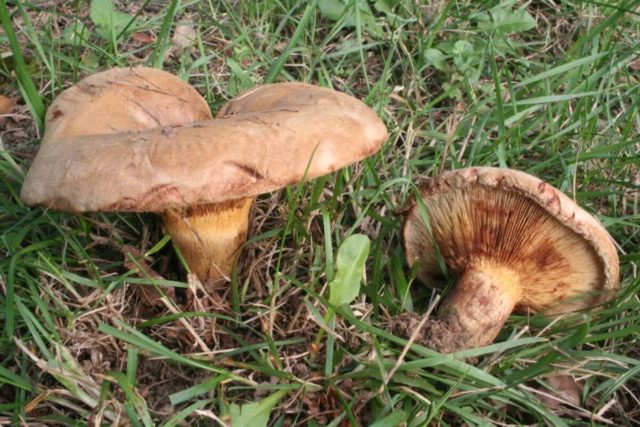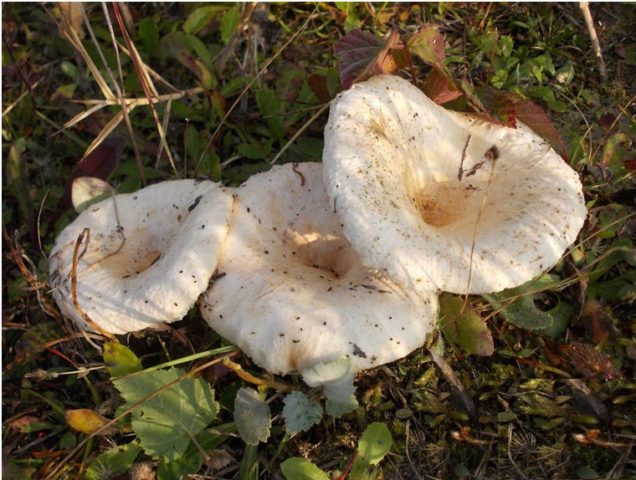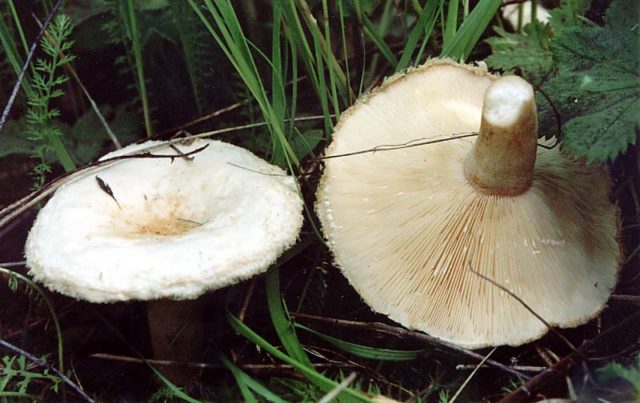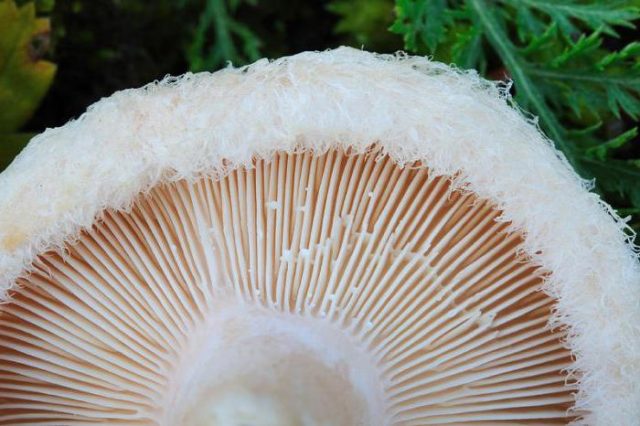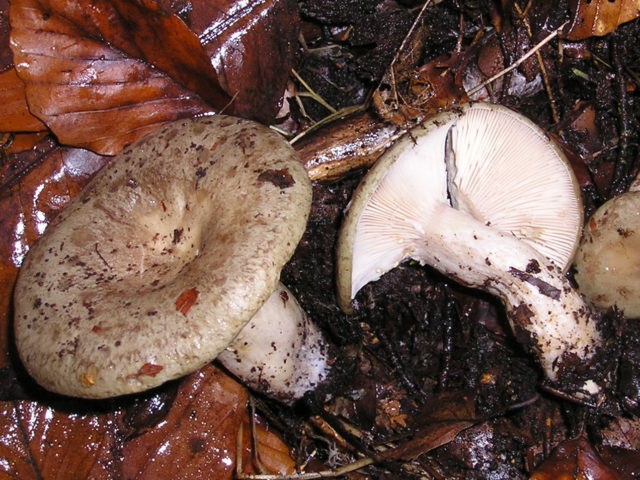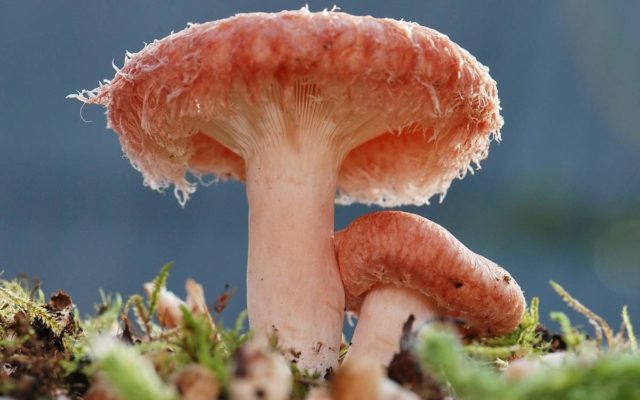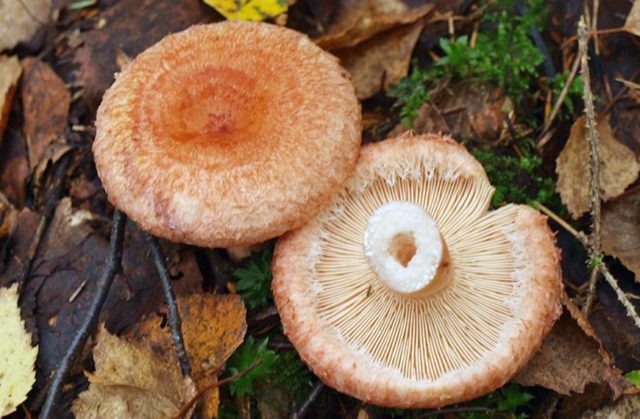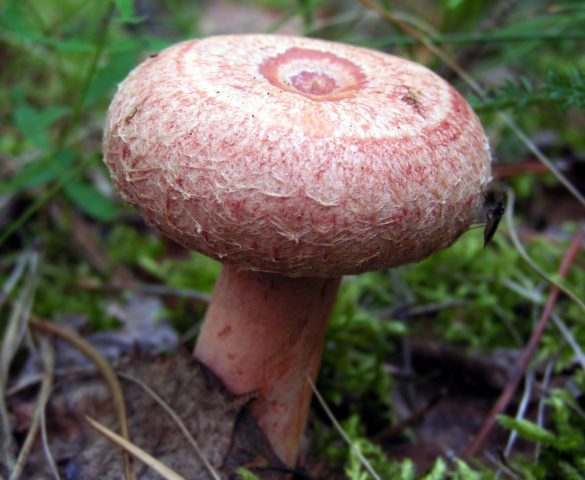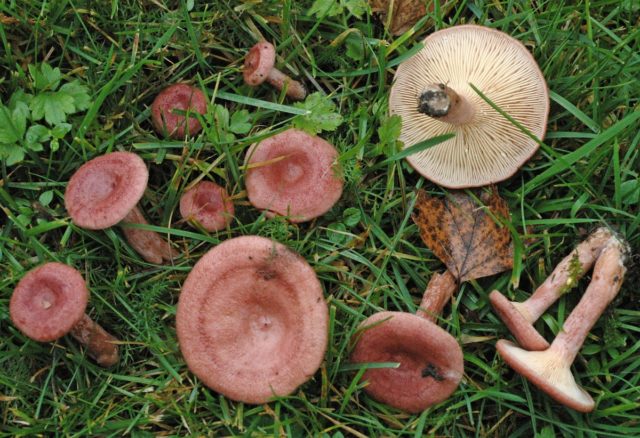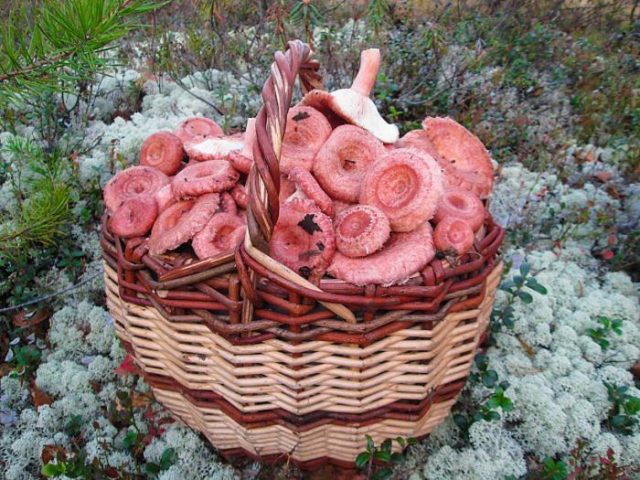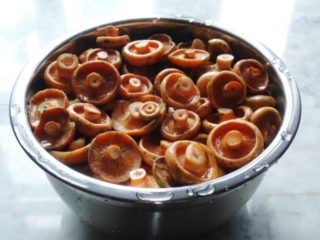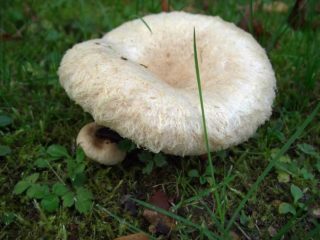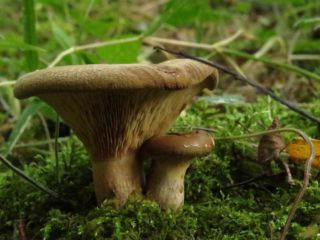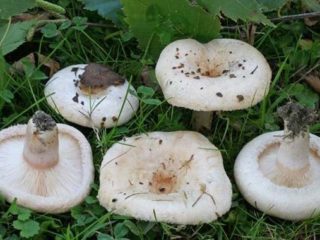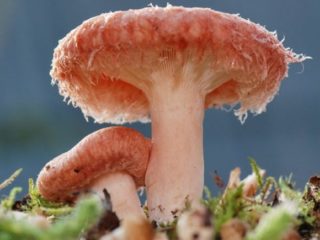Content
Volnushki grow in forests throughout Russia. They can be found in large groups near birch trees. Mushroom pickers collect pink and white varieties. They are classified as conditionally edible mushrooms and are widely used for pickling and pickling.
When and how do voles grow?
Volnushki belong to the Mlechnikov genus and the Syroezhkov family. This variety is classified as conditionally edible in Russia. It is eaten after preliminary processing. Before cooking, mushrooms should be boiled or soaked in water. In some countries, these mushrooms are classified as poisonous.
Volnushki appear quite late, and they can be collected before the first frost. The first peak of the appearance of these mushrooms occurs in the second half of July. Since the end of August there has been a second growth spurt. Their full fruiting occurs in September.In sunny and warm weather, characteristic of “Indian summer,” representatives of this species are found even in October.
Representatives of the Russula family grow in groups of 5 - 8 pieces. You can also find whole families of several dozen specimens. They bear fruit well even in years when there is a poor harvest for mushrooms.
Photos of tremulous mushrooms during different stages of growth.
How many days does the wave grow?
Volnushka mushrooms grow relatively quickly. Three factors have a decisive influence on the growth rate of their fruiting body:
- The optimal air humidity for mushrooms in the ground layer should be no lower than 50 - 60%.
- The air temperature required for the active development of the fruiting body is 18 - 27 0C. If it exceeds 30 - 35 0C, then its crops are suppressed.
- Bluebirds need good lighting.
If, after the rain, the weather is sunny but not hot, the wave in the forest grows to medium size in a short time (3 - 4 days). Its cap reaches 4 - 6 cm in diameter, and in some specimens - 15 cm.
Where do mushrooms grow?
Volnushki grow throughout the Russian Federation. According to reviews of mushroom pickers, there are especially many of them:
- in the central part of Russia;
- in the north of the Central Russian region;
- in the forests of Yakutia and Transbaikalia;
- in the Kaliningrad region;
- in forests near lakes along the Chelyabinsk tract (Sverdlovsk and Chelyabinsk regions).
In which forests do the mushrooms grow?
These mushrooms form a symbiosis mainly with birch. Volnushki grow in those forests where these trees are found:
- birch groves and birch forests;
- deciduous forests with a population of birches;
- light mixed coniferous-birch forests with hummocky soil covered with grass;
- former collective farm fields overgrown with young birch trees.
In mixed forests, these mushrooms are found next to saffron milk caps and boletuses. Pink waves can be found in the northern part under old birch trees. They can also be found in linden and broom forests. White trumpets are light-loving; they are often found under young birch trees at the entrance to a forest plantation where there are no dense thickets. They can also grow in city parks and squares.
What kind of waves can be collected
You can collect two types of waves: pink and white. In terms of nutritional value, they belong to the second category of mushrooms. Their young fruiting bodies have fairly dense pulp, retain their shape well after harvesting and withstand transportation. The most valued are the so-called “curls” - frills, the diameter of the cap of which is no more than 3 - 4 cm.
Often these fruiting bodies can be confused with saffron milk caps and saffron milk caps. But saffron milk caps are larger, they always have smooth orange caps with less clear circles, their juice is carrot-colored, the cut site oxidizes and acquires a bluish tint.
The pigs have a different, less convex shape of the caps and have no villi. The fruiting bodies are brown or yellow.
White waves
The popular name for the white wave is whitefish. The mushroom is distinguished by the white color of its fruiting body. In terms of external features, it has some similarities with the pink variety, but is characterized by smaller sizes:
- The hat, no larger than 10-12 cm in diameter, is white-fawn in color and seems a bit dirty. Its shade, depending on the place of growth, may vary slightly: be lighter or darker. The convex surface is covered with villi, forming concentric zones. Due to the pale or yellowish hairs, the circles on the cap are not as clear as on the pink variety. In the center of the cap there is a rounded yellow depression. With age it becomes funnel-shaped.
- Pulp. The dense white pulp, when broken and pressed, releases a milky liquid with a faint odor of geranium. The juice does not oxidize in air and does not change color. In wet weather, the flesh may become slimy.
- Records. The plates of the whitefish are adherent, narrow and descending. They are often located and colored in the same tone as the cap - whitish or fawn.
- Leg. The white leg, 3–4 cm high, has the shape of a cylinder. In dense grass it can grow up to 8 cm. In a young mushroom it is dense, but becomes brittle with age. Usually the surface of the stem is smooth, but may have small fibers.
- The spore powder is whitish, with yellowish tint.
The inedible counterpart of the white butterfly is the sticky milkweed. It has a greyish-green cap with darker markings. The stem is lighter than the cap and is sticky to the touch. The pulp is white and odorless, but has a very pungent taste. The juice at the break oxidizes, acquiring a green color.
Pink waves
Synonymous names for this mushroom are volzhanka, volnovkha, rubella, decoction, krasulya, volvyanitsa.
Volnukha has a recognizable appearance:
- The diameter of the cap of such a mushroom is from 5 to 10 cm. Large specimens are found, up to 15 cm in size.On the pinkish-red surface, dark concentric zones are clearly visible, reminiscent of circles on water. They are formed by coarse villi. With age, the circles become less clear. The shape of the cap of a young mushroom is convex. Gradually it becomes flat, with a small depression in the center and drooping edges.
- Pulp. The fruiting body of Volzhanka has white or milky flesh. It is brittle, friable, has a light resinous aroma, and is rarely damaged by worms. At the break, a cloudy light juice with a bitter aftertaste is released. When pickled, the flesh turns light gray.Important! If processed incorrectly or for a short period of time, the juice can cause digestive upset.
- Records. The young mushroom has pink, thin, frequent, adherent plates. Over time, they turn yellow or acquire an ocher hue and stretch in the form of a cone towards the base of the leg.
- Leg. The pale pink stem of the fruiting body is cylindrical in shape. In young mushrooms it is solid, then it becomes hollow inside. The dimensions of the leg are average: its length is 3-6 cm, its thickness is about 2 cm.
- Spore powder is white or cream in color.
In the photo you can see how pink waves grow:
Inexperienced mushroom pickers may confuse Volnukha with spiny milkweed. This mushroom is considered inedible. Its cap does not have a pubescent edge. It may have small red scales. The pulp is white or dark yellow, odorless, and has a very pungent taste. The color of the pulp and juice when cut varies from white to green, sometimes black-green.
Rules for collecting tremors
Volnukha and whitewort are collected by picking or cutting. The collection method does not affect the condition of the mycelium. You should not stir up the forest floor too much in search of a wave. This can disrupt the mycelium and damage the embryos of the fruiting bodies. You cannot destroy mushrooms that are not the subject of collection. They perform an important ecological function in the forest.
The place where the mushrooms are cut or broken is inspected. If there are wormholes, the fruiting body is cut and the affected areas are removed. It is convenient to put the collected volushki in wicker baskets or lubyankas, the bottom of which is covered with paper. Without compacting them, they are laid with the plates down so that sand does not accumulate between the folds.
The video review presents in detail the features of collecting tremors.
Storage rules
Volushka mushroom is a perishable product, so you should adhere to certain rules for its storage:
- The fruiting bodies are immediately cleared of forest debris, which can cause rotting.
- Wet flakes collected in the rain are processed immediately after arriving from the forest.
- Freshly picked mushrooms can be stored at room temperature for no more than 6 hours.
- If it is not possible to immediately peel the mushrooms, place them in a cool place without washing them so that they do not touch each other. This way the shelf life can be increased to 15 - 18 hours.
- Cleaned whites and wolves are stored in the refrigerator for no more than 3 days.
Conclusion
Volnushki grow in families in birch, deciduous and mixed coniferous-birch forests. You should look for pink waves on the northern edges under old birch trees. White - can be found under young birch trees in unthickened parts of plantings. It is best to go in search of these mushrooms on the 3rd - 4th day after the rain. The rules for collecting and storing fresh mushrooms are standard, as for all types of mushrooms.
